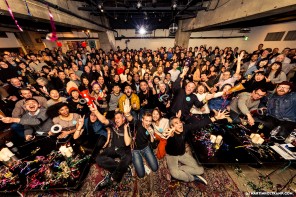If you have strolled across graffiti adorning walls of Delhi, Harsh Raman might be a household name for you. And it’s no wonder that you might have often fallen short of words for his work, while ‘Wow’ doesn’t serve justice to the one storey ‘Metamorphosis’ graffiti wall in Shahpur Jat, ‘Ohmygod!’ doesn’t quite hit the ball for the amusing graffiti outside Agrasen ki Baoli.
We dropped the ‘Oohs , Aahs and Wows’ and what followed was an intriguing conversation with the graphic designer and renowned graffiti artist, Harsh Raman:
Q. The first obvious question, given the umpteenth number of explanations to street art, how would you as a graffiti artist describe it?
Street art is the rawest and purest form of social expression. Any ordinary person can go ahead and just paint a wall to put across what he really wants to say. If you ask a common man what he would want to do to correct the wrong or just make a change, an obvious reply is, ‘What do you expect me to do?’ ‘I am busy surviving already.’
This is exactly where street art runs to the rescue. Street art brings power back to people. You don’t have to change the world to change the world, you just have to paint a wall to change the world.
Q. Is this also the crux of your upcoming project, ‘WOW’?
Yes, totally! WOW revolves around the same perception. If you look at it, there are a really less number of women street artists in Delhi. Whenever I have worked with women graffiti artists, they have this crazy energy since they have so much to prove. WOW is a social experiment which strives to take along ordinary women, putting them on larger than life structure and letting them create something beautiful and memorable. Having an entire wall dedicated exclusively to your own expression is immensely empowering.
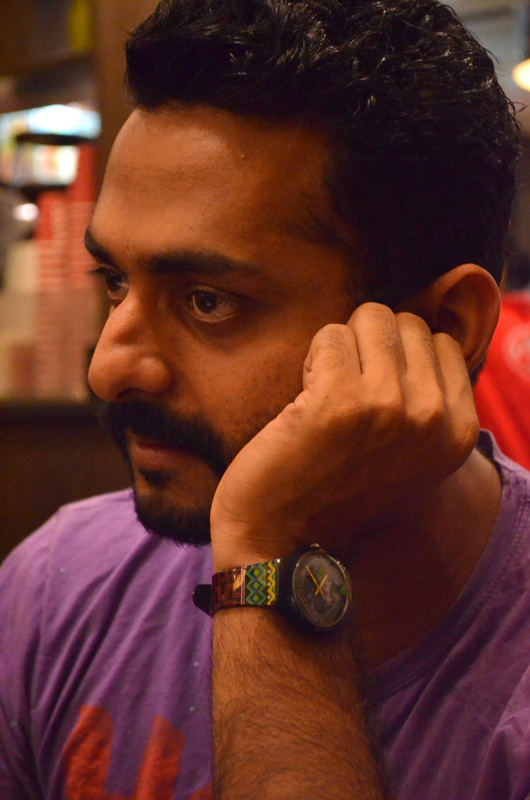
PALLACK BHUTANI
Q. You had been doing a lot of stuff already when you stepped into the world of street art, how did it really hit you that you wanted to meddle into something like this?
Excess advertising is one huge reason; I was sick and tired of the visual noise that each one of us is bombarded with, every day. All these established brands and companies are exploiting social issues to sell their products to people. But the fact remains that social causes go for a toss in the pitch of the product. Brands can do so much better and can actually help the cause and not just exploit it for profiteering purposes. You need to plug that effort in and communicate well enough. I have done stuff sponsored by brands but the integrity of the stuff you want to do should not be compromised in the name of brands.
Q. Street art and money, does that seem like a heady combination?
If one is entering street art to make money, he/she definitely needs therapy. It’s not really a money making profession. It’s a profession more to do with passion and that drive to bring about a change, even if it’s an individual one. For instance, Delhi has this whole rebellion vibe to it and street art fares well in a volatile vicinity. All that destructive energy can be pushed to a more positive outcome, if given the right outlet. You paint a wall and let the world know what you feel like. It doesn’t necessarily have to be directed towards a social change, it can just be a personal expression of freedom. This is how street art balances the destruction-creation relationship.
Q. Coming to your projects, you did a project called ‘Escape’ in Naukuchiatal. Tell us more about it!
With the ‘Escape” project, I tried to bring something new to the table. Painting a wall didn’t quite make sense since it’s a hills abounding area. So, I took doors as my subject. Metaphorically, a door is always associated with escape. You open a door and there’s this big risk and in the spiritual sense, it can transport you to somewhere else. That’s the exact concept that I played with in this project.
Q. What was your first big project?
That has to be the Brinda project which includes a graffiti wall each in Hauz Khas Village, Agrasen ki Baoli and Sri Aurobindo Marg.
It is a collaboration between the Brazilian street artist, Sergio and me where we strive to explore each other’s cultures, similarities and differences but not in the commercial sense. Further, there are a lot of similarities between the two nations that go unnoticed-strong family structure, religious values, economic disparity etc. Street art is more about the common man. We interviewed Indians living in Brazil and vice versa and came up with these concepts, One of the graffiti walls has been done through the concept of illusionary and delusionary frames where if move from left to right, the dancer’s movements turn from Brazilian to Indian and if you move from left to right, it changes from Indian to Brazilian.
We have even done a documentary on it which is going to be released next month!
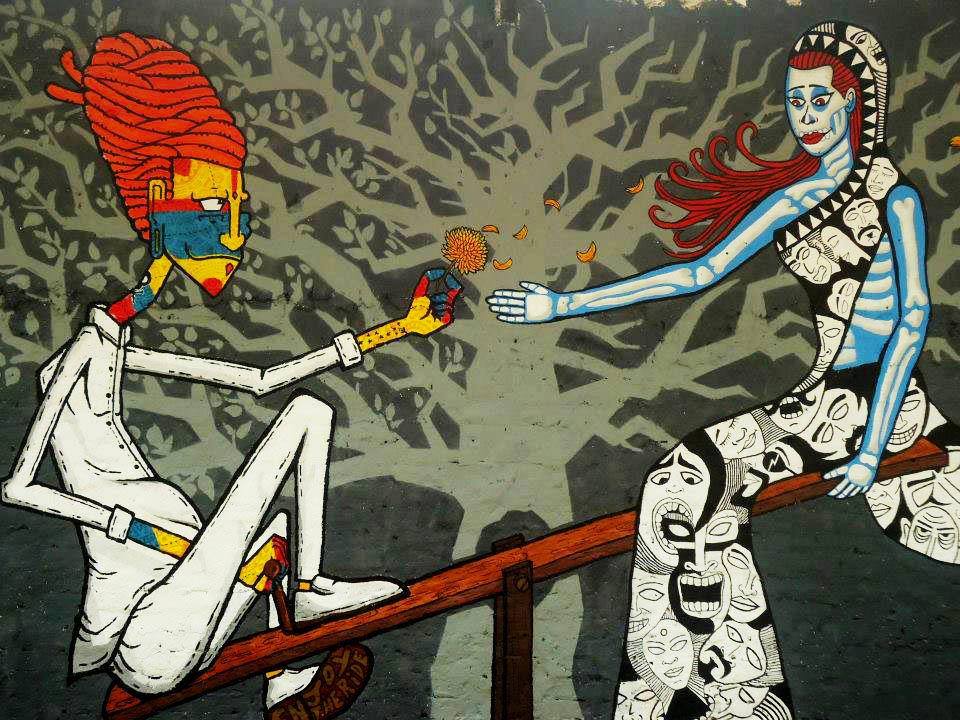
Brinda Wall (HKV) : https://www.facebook.com/harshramansinghpaul
Q. Quijote Wallah has been touted as your most path-breaking project. Give us more detail?
The project is hugely inspired from the Spanish novel ‘Don Quixote’ and is funded by Instituto Cervantes Nueva Delhi. It’s a collaboration between performance maker Sukhesh Arora and me wherein we have merged Street theatre and Street art. We have created a moving graffiti wall where the wall breaks and comes together. The walls not only serve as the backdrop but also as props and characters.
It includes two sets of performances. One for the intellectuals, who can pay and understand the sensibilities behind this kind of art. Another is for the underprivileged and schools kids. The idea was to create something that can be used by everyone. This is what I love about Street art, it brings everyone at the same level. Everyone can view it but nobody can own it. This project strived for the same.
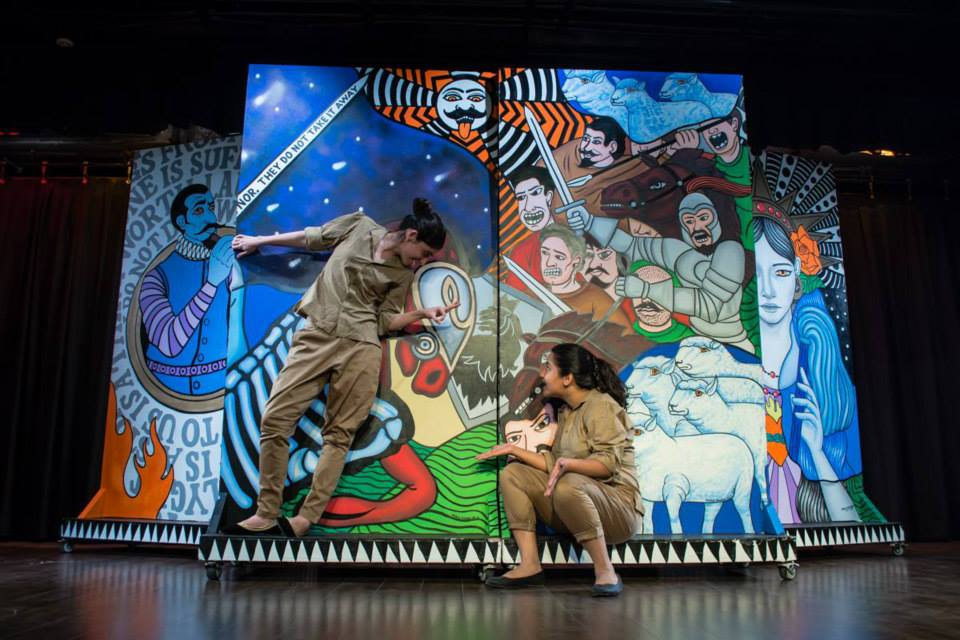
Quijote Wallah: https://www.facebook.com/harshramansinghpaul
Q. Your recent runaway hit project, Shree 420 in Mumbai, how did you go about it?
I will have to admit that Shree 420 graffiti has been my most challenging project. For starters, it was an illegal wall and then we got caught by cops twice. Further, it was raining all night and I had just one night since I had my flight the next day. I went to the airport in the same painting clothes and everybody was asking me if I am a painter and I quipped with a smirk, ‘No, I am an investment banker. This is just something that I do on Sundays.’ This was indeed the most challenging project but the most rewarding one at that.
Q. Given the glitches involved in Street art, what would you recommend to those who want to enter Street Art?
I would say that you should get into street art only if you can’t do anything else. You should be really passion driven to step into a career like this.
Talking about glitches, Yes, permissions can be cumbersome but you can always paint illegally. Gradually as the residents’ dark perspective towards graffiti changes from vandalism to something more substantial, you know you are headed in the right direction. Start with a small wall, maybe your own house. You know, you have got to start somewhere.
Check out his brilliant artwork at Shahpur Jat, Agrasen ki Baoli and Hauz Khas Village among others and delve in the glory that graffiti walls boast about.
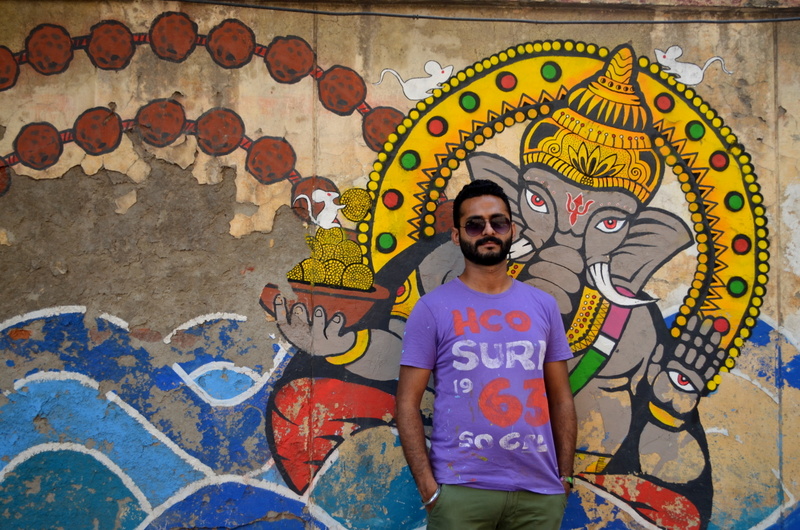
PALLACK BHUTANI









